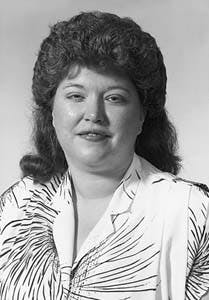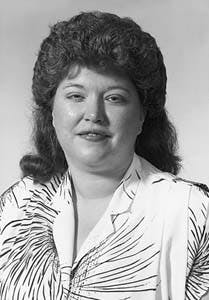Valerie Yeager, Chris ShuchartViscosity-controlled acid effectively improves acid placement, provides more uniform damage removal, improves surface etching, and controls acid fluid loss.
Halliburton Energy Services
Duncan, Okla.
Viscosity-controlled acid (VCA) contains gels that break back to original viscosity 1 day after being pumped. These acids have been used for:
- Matrix-acidizing long horizontal and vertical well intervals
- Controlling fluid loss in fracture acidizing to obtain longer fractures and deeper live-acid penetration.
Fluid pH controls gel formation and breaking.
In one operator's horizontal wells, viscosity-controlled acid increased production by 2.5-6 fold. In carbonate formation fracture-acidizing, these acids have shown production improvements of 170 to 375%.
VCA acid can be used in both cased or open hole, in vertical or deviated/horizontal wells.
The gels are limited to formation temperatures of 120-275° F.
Matrix acidizing
Full coverage of the damaged zone is the key to successful matrix acidizing. Acid must be diverted to another well bore section so that it more uniformly covers the active interval rather than overtreating one area.
Fig. 1a [43324 bytes] shows the effect of excessive wormholing, which is random growth channels perpendicular to the well bore. Once the wormholes have started, any additional acid pumped will further enlarge the wormholes and will not remove filter-cake damage beyond the wormhole area of the interval.
Fig. 1b [43324 bytes] through 1e illustrate the effect of blocking wormholes and extending live acid further into the well bore.
In Fig. 1b the acid has removed some damage and has begun to wormhole into the formation. Before the acid can form large wormholes, VCA pumped behind the acid stage pushes the acid down the well bore, enters the wormholes, and forms a gel (Fig. 1c [43324 bytes]).
A following acid stage (Fig. 1d [43324 bytes]) pushes previous stages of fluid deeper into the well bore, but bypasses wormholes full of viscous gel. In addition, smaller wormholes are eliminated, so that acid normally penetrating these wormholes will remain in the dominant wormhole, penetrating deeper into the formation.
This alternating-stage schedule is continued as long as needed to treat the entire interval.
Fig. 1e [43324 bytes] shows that after the gel breaks, the entire interval was contacted by live acid, wormhole growth was minimized, and all wormholes are now free of gel.
The gel breaks back to its original viscosity and is produced back to the surface, leaving the interval free of damage.
Typically, VCA for matrix acidizing contains 3-5% HCl. The HCl-only stages are typically 15-28% HCl.
Fracture acidizing
Fracture acidizing is only applied to carbonate reservoirs, such as limestones, chalks, and dolomites, because these formations chemically react with acid.
In the VCA method of fracture acidizing, acid is injected at a high enough rate to develop the pressure required to fracture a carbonate formation.
Fracture conductivity is a result of differential rock removal that occurs as the acid chemically reacts with the formation face. Production increases because of both the fracture length and conductivity.
Fluid loss in fracture acidizing is particularly difficult to control because of the:
- Fractured and/or vugular nature of carbonate permeability/porosity
- New surface area constantly being generated during the reactive process.
Degradable fluid-loss additives used in hydraulic fracturing are generally of little use in fracture acidizing because these additives have a small particle size and cannot remain solid in an acidic environment. Larger, nondegradable particulates usually cause concern because these particulates are permanent and can stop fluid flow into pathways needed for production.
The VCA process decreases fluid loss and allows more live acid penetration and greater fracture lengths without either of these disadvantages.
Fracture acidizing presents two principal challenges:
- Controlling fluid loss to create geometry
- Providing differential etching for conductivity.
VCA reduces fluid loss by polymer action that crosslinks under pH control. VCA blocks wormholes after these have formed, thus maintaining fluid-loss control. Blocking wormholes conserves acid so that more acid can be forced further into the fracture to etch additional fracture surfaces.
After the acid spends itself enough to increase the surrounding pH, the chemical bonds in the additive break and the wormhole blockages dissolve.
A continuous acid fracturing treatment with 15-28% HCl viscosified with VCA additives can increase fracture lengths.
Excessive fluid loss is the major problem encountered in acid-fracture penetration. Acid pumped into the well etches the fracture face and creates perpendicular, random flow channels or wormholes. Although wormholes provide stimulation in matrix acidizing, wormholes are detrimental in acid-fracture penetration and horizontal well stimulation because fluid is lost to the matrix rather than being pumped further down the fracture or horizontal well bore.
Wormholes grow in length with increased acid concentrations and pumping rates. As acid is delivered to the wormhole tips, the wormholes will enlarge to a point where their surface area will consume most of the available live acid.
Within a short time, the acid being consumed by the wormholes and the fracture exceeds the pump rate, and a positive net fracturing pressure cannot be maintained to keep the fracture open. The fracture extension or horizontal stimulation will slow or stop and any additional acid pumped either dissolves the rock at the existing fracture face, creates wormholes on the fracture face, or enlarges existing wormholes in the formation.
These conditions further make the fracture penetration or horizontal stimulation ineffective. For example, a 400-ft fracture may be created; however, during a fracture-acidizing treatment, live acid may travel only 80 ft (or less) into the fracture if fluid loss is not controlled.
When the fracture closes, only the portion etched by live acid will be conducive for hydrocarbon flow.
VCA process
The VCA system includes a synthetic polymer that crosslinks with changes in pH. The VCA system is designed to yield a viscosity of 20 cp at 511 sec-1, a consistency of syrup or honey. Once pH rises to 2, H+ concentration is now 0.01 mole/l., crosslinking occurs and viscosity increases to as much as 1,000 cp ("lipping" frac gel).
When the spent acid reaches a pH of 4, the crosslink breaks. A breaker is included to help ensure a complete break.
The spent acid is returned to its original viscosity for easy cleanup. Dilution with formation brine, etc., further decreases the gelled acid viscosity and aids in cleanup. VCA fluids can also be energized with carbon dioxide or nitrogen to improve cleanup rate.
Fig. 2 [10333 bytes] shows the dramatic decrease in fluid loss, over time, of a VCA system compared to gelled acid without VCA. After 3 min, fluid loss with a gelling agent but without crosslinking is nearly 50% higher than with the VCA system.
A gelling agent does provide more fluid-loss control than a neat acid.
Applications
In three low-permeability oil wells in Texas, regular acid was used to treat one well and VCA was used in the remaining two wells. After 3 months, the well treated with regular acid produced 110% of the previous level. However, production in the two wells treated with VCA increased by 185 and 337%.
Eight additional wells in the area were stimulated with similar production increases.
A Qatar operator treated a 9,000-ft, open hole horizontal interval in eight stages of VCA. Production from this well and several subsequently treated wells increased 2.5-6 fold. The operator now routinely applies VCA treatments.
In another area in Texas, typical wells were producing at rates of 1.5-2 MMcfd. Six wells stimulated with VCA demonstrated an average production increase to 4.1 MMscfd. More than 30 additional treatments have produced similar results.
A New Mexico operator used VCA on a well that was producing both oil and gas. Oil production from the well increased 183% and gas production increased 800%.
Two oil wells in the Middle East were stimulated by an operator using VCA. The first well increased production by 350 bo/d and the second well increased production by 1,400 bo/d.
The Authors
Valerie Yeager is a senior technology engineer III and team leader at Halliburton's technology center at Duncan, Okla. She is responsible for enhanced-production research as it relates to acidizing.Yeager received a BS in chemistry from the University of Denver and a BS in petroleum engineering from Montana College of Mineral Science & Technology. She is a registered professional engineer in Oklahoma.
Chris Shuchart is a principal technologist specializing in stimulation chemicals at Halliburton's technology center at Duncan, Okla. His responsibilities include research and development in hydrofluoric acidizing chemistry, gelled acids, and fracturing gel breakers.Shuchart holds a BS in chemistry from Shippensburg University and PhD in inorganic chemistry from Ohio State University. He is a member of the SPE and the American Chemical Society (ACS).
Copyright 1997 Oil & Gas Journal. All Rights Reserved.




